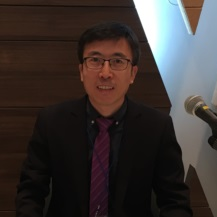Shape Memory Alloys for Civil Engineering (Second Volume)
A special issue of Materials (ISSN 1996-1944). This special issue belongs to the section "Construction and Building Materials".
Deadline for manuscript submissions: closed (20 August 2023) | Viewed by 5640
Special Issue Editors
Interests: shape memory alloy; civil engineering; self-centering; resilience; damping
Special Issues, Collections and Topics in MDPI journals
Interests: shape memory alloy; self-centering; earthquake engineering; resilience
Special Issues, Collections and Topics in MDPI journals
Interests: SMA-based resilient bridge structures; novel bridge structral systems against earthquakes; ultra-high-performance concrete (UHPC); engineered cementitious composite material (ECC); life-cycle management of bridges; machine learning application in bridge engineering
Special Issues, Collections and Topics in MDPI journals
Special Issue Information
Dear Colleagues,
Shape memory alloys (SMAs) are capable of recovering large strains, either spontaneously or by heating, depending on their thermal–mechanical state. Since their early development in the 1960s, SMAs have been successfully applied in the medical, aerospace, robotic, and automobile industries. The consideration of SMAs as emerging materials for civil engineering started in the 1990s, and great research progress has been made since then. However, the practical application of SMAs to the construction industry has not been common, partially due to insufficient engineering-oriented design approaches and a lack of effective knowledge exchange between the communities of material scientists and civil engineers. This Special Issue plans to provide an overview of the most recent advances in the field of SMA research and applications in civil engineering. It aims to help remove knowledge barriers across disciplines, and sheds considerable light on the opportunity to commercialize SMA products in the construction industry.
Potential topics include, but are not limited to:
- Advanced modelling of SMA;
- Heat treatment strategies for SMA;
- SMA-based self-centering structural elements, devices and members;
- SMA for structural retrofitting;
- Performance-based design of structural systems incorporating SMA;
- Development and application of new classes of SMA;
- New SMA elements and devices.
Dr. Cheng Fang
Prof. Dr. Canxing Qiu
Dr. Yue Zheng
Guest Editors
Manuscript Submission Information
Manuscripts should be submitted online at www.mdpi.com by registering and logging in to this website. Once you are registered, click here to go to the submission form. Manuscripts can be submitted until the deadline. All submissions that pass pre-check are peer-reviewed. Accepted papers will be published continuously in the journal (as soon as accepted) and will be listed together on the special issue website. Research articles, review articles as well as short communications are invited. For planned papers, a title and short abstract (about 250 words) can be sent to the Editorial Office for assessment.
Submitted manuscripts should not have been published previously, nor be under consideration for publication elsewhere (except conference proceedings papers). All manuscripts are thoroughly refereed through a single-blind peer-review process. A guide for authors and other relevant information for submission of manuscripts is available on the Instructions for Authors page. Materials is an international peer-reviewed open access semimonthly journal published by MDPI.
Please visit the Instructions for Authors page before submitting a manuscript. The Article Processing Charge (APC) for publication in this open access journal is 2600 CHF (Swiss Francs). Submitted papers should be well formatted and use good English. Authors may use MDPI's English editing service prior to publication or during author revisions.
Keywords
- shape memory alloy
- civil engineering
- self-centering
- resilience
- damping
Benefits of Publishing in a Special Issue
- Ease of navigation: Grouping papers by topic helps scholars navigate broad scope journals more efficiently.
- Greater discoverability: Special Issues support the reach and impact of scientific research. Articles in Special Issues are more discoverable and cited more frequently.
- Expansion of research network: Special Issues facilitate connections among authors, fostering scientific collaborations.
- External promotion: Articles in Special Issues are often promoted through the journal's social media, increasing their visibility.
- Reprint: MDPI Books provides the opportunity to republish successful Special Issues in book format, both online and in print.
Further information on MDPI's Special Issue policies can be found here.
Related Special Issue
- Shape Memory Alloys for Civil Engineering in Materials (12 articles)








